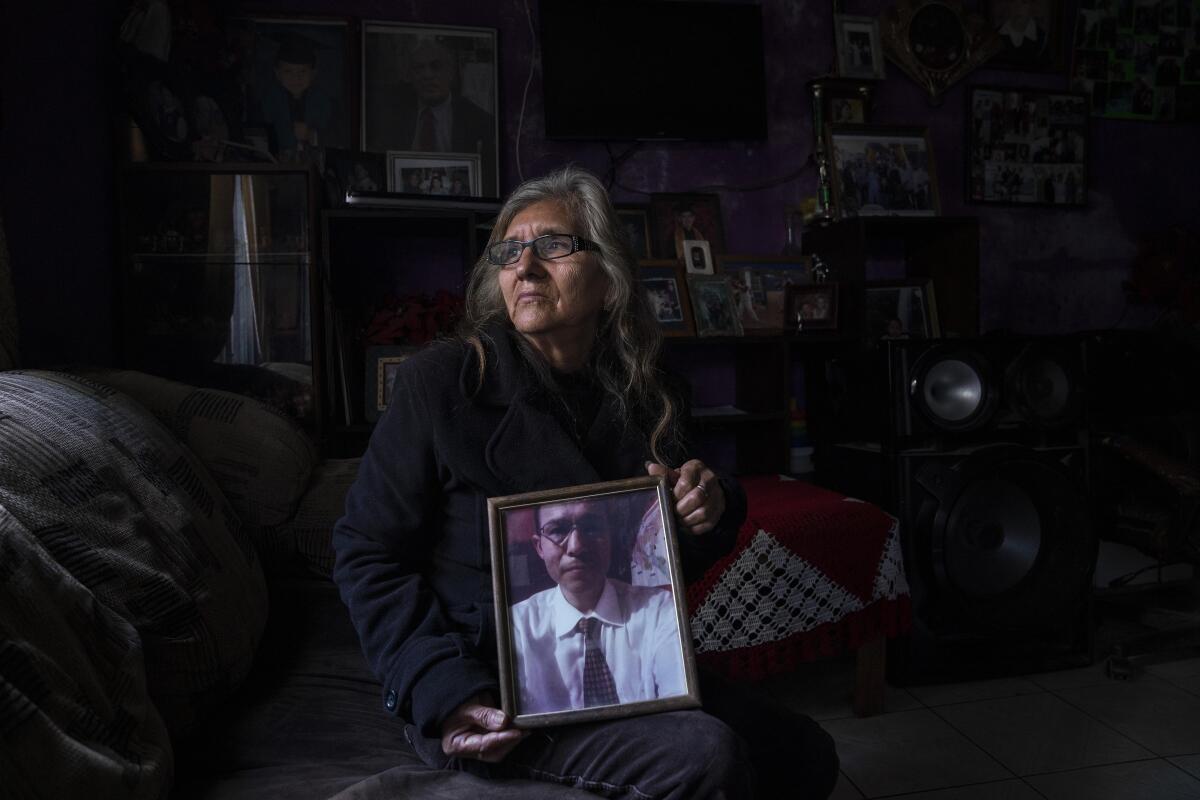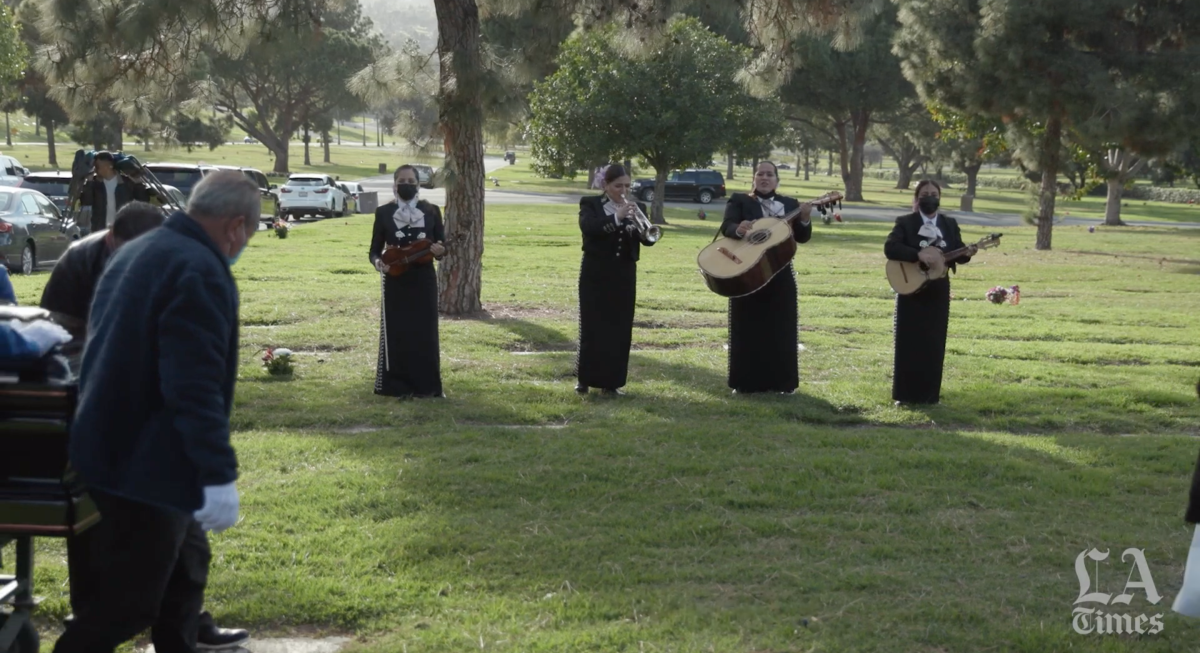Latinx Files: Netflix has a Latinx problem

- Share via
On Friday, the USC Annenberg Inclusion Initiative released a detailed report analyzing representation in front of and behind the camera at Netflix, and the numbers were dismal.
According to the report, which took a look at 126 U.S. Netflix movies and 180 scripted shows made in 2018 and 2019, only 2.6% of all stories had a Latinx lead or co-lead and only 4.5% of main cast members were Latinx.
Behind the camera, the report found that only one director, one writer and five producers had worked for a Netflix-produced film in that period. On Netflix series, only 2.7% of creators, 2.6% of producers, and 2.5% of writers and directors were Latinx.
These figures aren’t a surprise, but are still disappointing.
“We’ve released this report in the interests of transparency,” said Netflix co-Chief Executive Ted Sarandos. “Because without this kind of information it’s very hard to judge whether we’re improving or not. And the report makes clear that while Netflix has made advances in representation year-over-year, we still have a long way to go.”
The Latinx experience chronicled
Get the Latinx Files newsletter for stories that capture the multitudes within our communities.
You may occasionally receive promotional content from the Los Angeles Times.
Netflix is by its own admission a data-driven company. Surely, then, the company is aware that Latinx millennials prefer their platform over others, according to this report by Horowitz Research. The streamer has become so ubiquitous and so accessible among Latinx households that my immigrant father doesn’t need my help to use it. (He’s very partial to heist shows — he won’t shut up about the Spanish series “La Casa de Papel.”)
The audience is right there, already willing to watch. Just look at the success of the “Selena” series, which became Netflix’s most-streamed show after it premiered, despite being panned by critics and people on social media.
Don’t stop there. Give us a show about Latinxs in space or traveling through time. Put a Mexican American kid in “Stranger Things” — trust me, they existed in Indiana during the 1980s. Do a horror series on the chupacabra or a psychedelic dystopian sci-fi movie. A miniseries on the Fania All Stars. How about a Latinx “Bridgerton”? I promise you, we will watch it all.
Latinxs have a million stories to tell — and we are good at telling them. All Netflix needs to do is let us tell them.
Consider subscribing to the Los Angeles Times
Your support helps us deliver the news that matters most. Become a subscriber.
Stimmy Stimmy ya? The latest on the stimulus check
Times staff writer Sarah D. Wire is reporting that Senate Democrats have agreed to reduce the number of people who will get a stimulus check. The new limitations were put in place to appease the more moderate members of their party.
Under the new plan, people who make less than $75,000 a year are still expected to get the full $1,400, and it will phase out completely for individuals who make $80,000 and higher. For joint filers, couples making $150,000 or less would get a full payment; those making $160,000 and up would get no payment.
Because this is being done through a budget reconciliation bill, the package needs only a simple majority to pass. It is not expected to get much Republican support.
“We’ll be fighting this in every way that we can,” Senate Minority Leader Mitch McConnell (R-Ky.) said. “It is my hope that at the end, the Senate Republicans will unanimously oppose it, just like House Republicans did.”
If passed, which could happen Friday or Saturday, the stimulus package would then go to the House of Representatives for a vote. The idea is to get the bill in front of President Biden by March 14, which is when expanded unemployment benefits expire.
Meet our Latinx staff: Christian Orozco talks to us about La Habra, Calif.
The Los Angeles Times employs more than 100 Latinx journalists. One of the goals of this newsletter is for you to meet them all. This week, we highlight Christian Orozco, a multiplatform editor who also played a major role in digitizing the 1983 Latino series that won the paper the Pulitzer Prize for public service. You can read about his experience bringing that project online here.
I wanted to take this opportunity to write about a city that means a lot to me, La Habra, Calif. It’s where I grew up. It’s where my dad grew up. It’s often overlooked and seems to make headlines only when tragedy strikes. The city is located in north Orange County and does not have a single freeway. Yet, it still has easy access to all the fun things L.A. County, San Gabriel Valley and the Inland Empire have to offer. My fondest memories, though, happened within the city. Going to the annual Corn Festival and spending time in the La Habra Boxing Club. Unfortunately, the pandemic took both of those away last year.
On April 30, 2020, the La Habra Lions Corn Festival Facebook page announced the cancellation of the annual festival and parade for the first time since it began in 1949, which was not surprising given how much damage the pandemic had caused up to that point. In August, the La Habra Boxing Club closed its doors for good after 40 years of serving the community. This one was a surprise. Boxing blogger William Trillo was there on its last day as founder Dave Martinez, with the help of former boxers Librado Andrade and Enrique Ornelas, cleared out the space.
With the devastation caused by the pandemic, the cancellation of the Corn Festival and closure of the boxing gym were gut punches to a city that saw business after business shut down. All signs point to the Corn Festival happening this year in August. How the city will do it in a safe and effective manner is still a question. It’d be hard to keep a mask on when the main attraction is shoveling elote and funnel cake into your mouth.
The best things you should be reading this week
— For the March issue of Texas Highways, the homie Roberto José Andrade Franco wrote about the important role Ciudad Juarez and El Paso have played in the history of lucha libre, which has its origins in the sister cities.
“Lucha libre is like a form of good and evil,” wrestling promoter Manny Hernandez told Andrade Franco of the duality of the sport and by extension the borderlands that gave it birth.
“Some of us, like me, I’m a rudo.”
— My colleague Molly O’Toole has this harrowing report on a Guatemalan asylum seeker who may need to have his hands amputated because of frostbite after he was rescued from the recent Texas ice storm. Customs and Border Protection wanted to deport him after he was discharged under Title 42, a Trump-era policy still in place under the Biden administration that uses COVID-19 as a pretext to deny asylum claims. After The Times originally published O’Toole’s report, Homeland Security officials said they would not remove him after all, but would instead process his asylum claim.
— More than 80,000 Mexicans have disappeared over the last 15 years. At least half of those bodies have ended up in government custody. Times staff writer Kate Linthicum and contributing reporter Maya Averbuch have this dispatch on what Mexico’s top human rights official calls a “humanitarian crisis and forensic emergency.”

— CBS News has this profile on Diana Trujillo, a flight director for NASA’s Perseverance, the rover that recently landed on Mars. Trujillo hails from Colombia and came to the United States at 17, working as a housekeeper to pay her way through school.
“The abuelas, the moms or dads, the uncles, los primos, like everyone has to see this,” Trujillo said of the importance of having a Latina in that mission control room. “And they have to see a woman in there, too. So, that they can turn around to the younger generation and say she can do it, you can do it.”
— Our Esquina, a digital sports outlet, spoke with longtime Associated Press photographer Julio Cortez, who has witnessed and captured many important moments in history. Among them was the Jan. 6 insurrection at the Capitol.
“That was obviously one of the hardest moments to kind of shake it off and get back into it, because in other situations if somebody tried to attack you, you leave the scene and you try a different angle and everything’s OK,” he said of the experience.
— For Remezcla, Jaelani Turner-Williams wrote about the “De Lo Mio” Air Max 95s and the deep Dominican Republic roots of the sneaker release.
The best thing on the Latinternet: Where have the mariachis gone?

Times video journalist Steve Saldivar wanted to see if the livelihood of mariachis had been endangered because of the pandemic, so he called a few of them up. What he found was the opposite.
El primo (he’s not my actual cousin) interviewed Maricela Martinez of Mariachi Lindas Mexicanas, who told him she’s been busy playing at funerals for people who have died because of COVID-19.
“It is absolutely hard to know that you have work because people are dying,” she said.
“Their line of work makes them particularly vulnerable,” Saldivar told me of the conditions the musicians face when playing a gig.
“Some groups have the trumpet player in the back, facing a different direction. They try to socially distance as best they can, but there can only be so many precautions when you perform.”
You can watch Saldivar’s video on our site or on YouTube.
The Latinx experience chronicled
Get the Latinx Files newsletter for stories that capture the multitudes within our communities.
You may occasionally receive promotional content from the Los Angeles Times.




